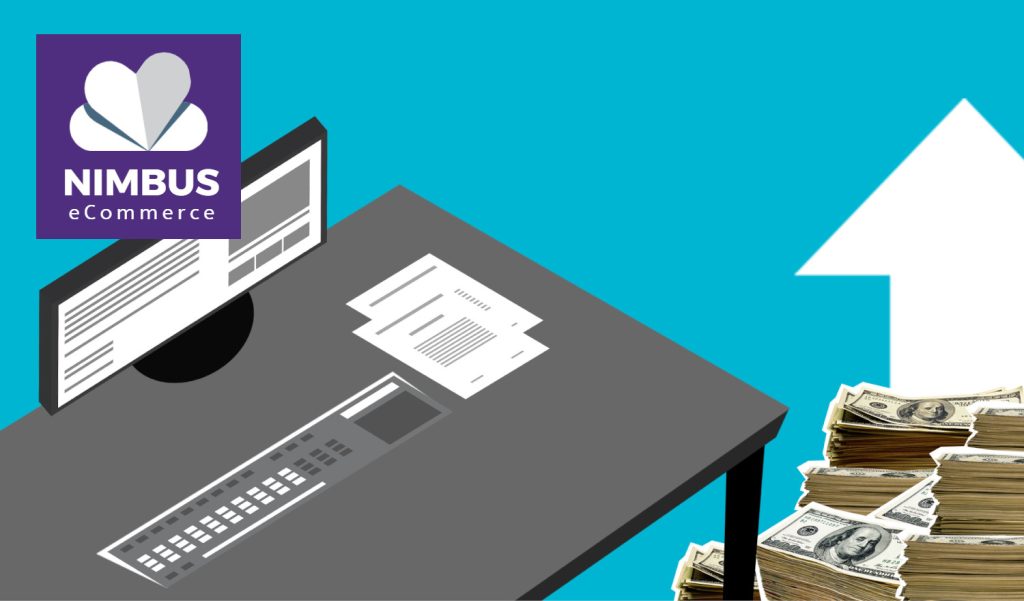How to Manage Negative Cash Flow in Ecommerce
The words “negative cash flow” certainly don’t sound like much of a cause for celebration and truthfully, they often aren’t. However, negative cash flow isn’t always a cause for concern, either, and even when it is, there are steps you can take to rectify the situation.
What is Negative Cash Flow?
The term “cash flow” refers to the money that enters and leaves your eCommerce business over a set period of time. Negative cash flow means that more money is going out than coming in.
It’s important not to mix cash flow and profit. It’s entirely possible to be in profit and run out of cash, or vice versa. A negative cash flow doesn’t necessarily mean that you’re making a loss, since cash flow only refers to liquid assets.
However, you need to make sure that you don’t run out of cash because you can’t use tied up assets to pay your staff, suppliers, energy bills and taxes.
Is Negative Cash Flow Bad News?
Negative cash flow can occur for a number of reasons.
Often, negative cash flow is a necessary part of growth. Ecommerce businesses increase spending when planning for growth so that they can earn more further down the line.
For example, an online fashion shop looking to expand their range of products would need to buy new clothes and accessories thus increase their inventory. They will also need to invest more in marketing to promote new products and increase the reach. This might mean spending more than they make for a short while.
New eCommerce businesses also need to invest money in order to establish themselves, create a buzz around their business and attract customers who would buy their products online.
Ecommerce businesses selling seasonal products may also experience negative cash flow during quiet times of year, and may need to spend more than they are currently making in order to prepare for the next busy season.
In short, negative cash flow is not always bad news. However, a prolonged period of negative cash flow is bad news, since your liquid assets won’t last forever. You need cash to continue operations.
The Causes of Negative Cash Flow
As discussed, negative cash flow can occur when an eCommerce business is investing in its future success, but if this is not the case for your business then there are some other key causes to look at.
Increased Expenses
If supplier prices suddenly shoot up, you could suddenly find yourself facing negative cash flow. Similarly, emergency or unexpected expenses such as additional warehousing costs or legal fees can threaten your cash flow.
Late Payment Fees
Sometimes it happens that your company statutory reports and returns are not filed on time. You must be aware that this may trigger late filing fees or penalties imposed by legal authorities. It’s not unusual that these fees are substantial and quite often businesses are not prepared to pay them.
Pricing
Without adequate research and forethought, you could end up under- or over-pricing your products, and both of these scenarios threaten your cash flow.
Under-pricing your products will result in low profit margins, whereas over-pricing means that you will struggle to make sales.
No Budget
If you don’t create a realistic budget, the chances are you will end up overspending and managing your money poorly. It’s important to get a clear picture of your spending and understand what you can and can’t afford.
Share:
More Posts
Send Us A Message
Actions to Take
Once you understand what is causing your negative cash flow, you need to take action to fix it.
Reduce Expenses
Cutting down your expenses is an important first step. Take a look at your spending and consider which overhead costs are unnecessary and can be eliminated. You also may be able to reduce your operating costs by outsourcing certain roles and shopping around with vendors and suppliers.
Eliminate Unprofitable or Low-Selling Products
Take a look at your sales figures and determine which products don’t create any significant income for your eCommerce business. Be sure to balance popularity against profitability. For example, a product might have a high profit margin but hardly sell at all. This makes it difficult to shift inventory and serves as a drain on your cash flow.
review Inventory Levels
It’s important to monitor inventory levels at all times. Quite often eCommerce businesses make a mistake of purchasing inventory in excess of the actual needs dictated by the level of sales. If this is the case, your money will be frozen until the purchased products are sold. The best way to manage this is to order only as much inventory as needed right now, maintaining a required buffer only. Inventory management applications can be very helpful here.
Create an Emergency Fund
Fail to prepare, prepare to fail, as the saying goes.
Even if your cash flow is healthy right now, it never hurts to have an emergency fund to act as a buffer for when sales take a dip or an unexpected payout becomes necessary. Look at ways to reduce your cash outflow and then transfer the extra funds into an easy-access emergency savings account. Arranging a line of credit can also give your eCommerce business a little extra breathing room.
Summary
Negative cash flow is not always bad news, but it can lead to some serious problems if left unchecked. It can be caused by increased expenses, a poor pricing strategy or lack of budgeting. All eCommerce businesses face negative cash flow at one point or another; the important thing is to identify what is causing it and then take action accordingly, for example, by cutting expenses, eliminating unprofitable products and monitoring inventory levels. In addition, it\’s important that you create emergency funds so you have something set aside when things go wrong. The best thing that you can do is keep a close eye on your cash flow at all times so that if difficulties do arise, you are well-equipped to deal with them.
Have a look to find out more…


